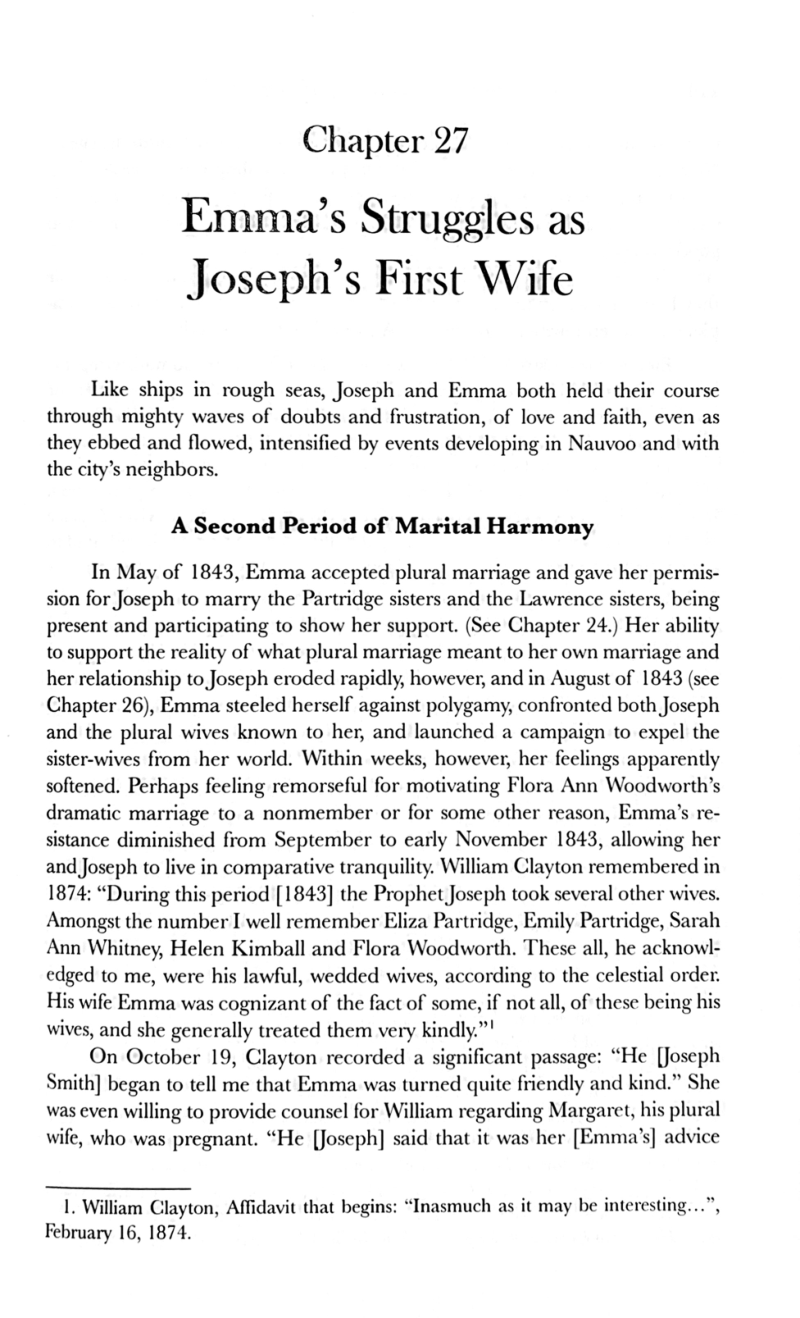Brian C. Hales reviews historical sources pertaining to Emma's reaction to plural marriage.
- Type
- Book
- Hearsay
- Secondary
- Reference
Brian C. Hales, Joseph Smith's Polygamy: History and Theology, 3 vols. (Salt Lake City, UT: Greg Kofford Books, 2013), 2:113, 137–138
- Scribe/Publisher
- Greg Kofford Books
- Audience
- Reading Public
- Transcription
Like ships in rough seas, Joseph and Emma both held their course through mighty waves of doubts and frustration, of love and faith, even as they ebbed and flowed, intensified by events developing in Nauvoo and with the city's neighbors.
. . .
Emma served as the first Relief Society president and although she voiced her dissatisfaction with polygamy, she continued to administer temple ordinances to women and otherwise support her husband in all other Church responsibilities. It appears that, in the fall of 1843, she experienced a shortlived change of heart regarding plural marriage that, with compromises on both sides, evolved into an outwardly stable monogamist lifestyle for the couple in the months after their explosive confrontation on July 13, 1843, over the revelation on celestial marriage.
It appears that Emma's challenges in relation to plural marriage were unique among all of the polygamous wives in Nauvoo. Because the revelation came through her husband, she was distinctively positioned to second-guess some, if not all, of the motives behind it. Accordingly, her proximity to the revelation-giver demanded greater faith than that required of any other wife in a plural marriage. The historical record indicates she continually strove accept plural marriage, despite her vacilations. Unquestioned is Emma's devotion to Joseph and his return devotion to her, despite the surrounding marital whirwind to which they were exposed.
- Citations in Mormonr Qnas
The B. H. Roberts Foundation is not owned by, operated by, or affiliated with the Church of Jesus Christ of Latter-day Saints.

